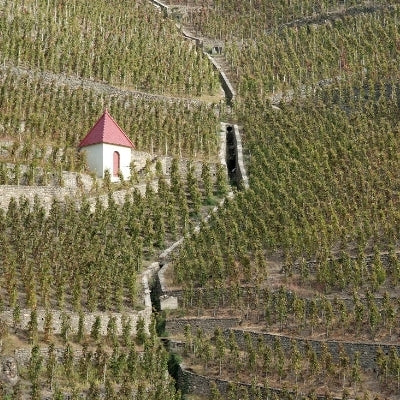
Northern Rhône Wines: Power & Granite
The Northern Rhône is home to some of wine world’s great igneous soils. Igneous soils come from magma, the molten innards of the Earth. Let’s look at granite, a type of intrusive igneous rock that helps to produce the powerful wines associated with the region.
“Intrusive” means that the granite formed when magma hardened within the earth, under pressure and under heat. Silicates such as feldspar, quartz and mica are common components of granite and its metamorphic descendants, if you will, such as schist and gneiss. Feldspars contain a lot of potassium, an important nutrient for vines, although not a lot is necessarily available to the vines, making granitic soils less fertile.
Granitic soil tends to have a low pH, meaning it is high in acid. This makes it quite different to the limestones and chalks in other wine regions. Granitic soil also tends to be more sandy, which is important for keeping the soil well-drained, avoiding water-logged vines that would lead to flabby and less concentrated wines.
Granite can be found in Priorat, Beaujolais, Rias Baixas, and perhaps most famously for those who buy premium wine, in the Northern Rhône. The winters there are quite cold. Add to that the chilling mistral wind billowing through the valley and the conditions are perilous—for both the vines, and the winemakers who typically must hand-harvest due to inability to mechanize on the steep slopes.
Heat-retaining granite, schist and slate are boons in this environment. The soil’s ability to soak up the heat of the sun and reradiate it to the vines allows for the power and strength of the Northern Rhône’s Syrah-based wines. The fact that the soils are quite poor can actually be a plus too. It’s not intuitive, but poorer soils can to an extent yield better wines, as the struggling vines attempt to make their grapes extra enticing. Tough love pays off in viticulture.
The mineral components common to granite are also assets to white grapes particularly in Condrieu, where Viognier is the singular variety. Some topsoils here contain decomposed mica serving to reflect the sun, benefiting the wines in the marginal climate. This topsoil is called “arzelle”, a name as graceful and enchanting as the perfumed wines can be. In particular, look for Chateau Grillet, a tiny monopole forming an amphitheater in the middle of Condrieu. It is a rarified treat.
Another Northern Rhône producer whose work is revered is that of Auguste Clape, perhaps the best known of Cornas producers. Auguste passed in 2018, but his son Pierre-Marie and grandson Olivier carry the torch. Look to Guigal for excellent representations from around the region, but especially for its single vineyard bottlings out of the Côte Rotie given the pet name the ‘Lalas’: La Landonne, La Turque and La Mouline. The Côte Rotie wines of Michel & Stephane Ogier are also ones to note.
Make sure you try the bottles below to appreciate the power granite gives them!
Read more in our Earth series here:
- The Alsace Wine Region's "Mosaic of Terroirs"
- The Best Sancerre Wines
- Barolo: Italy's Finest Wine Region?






